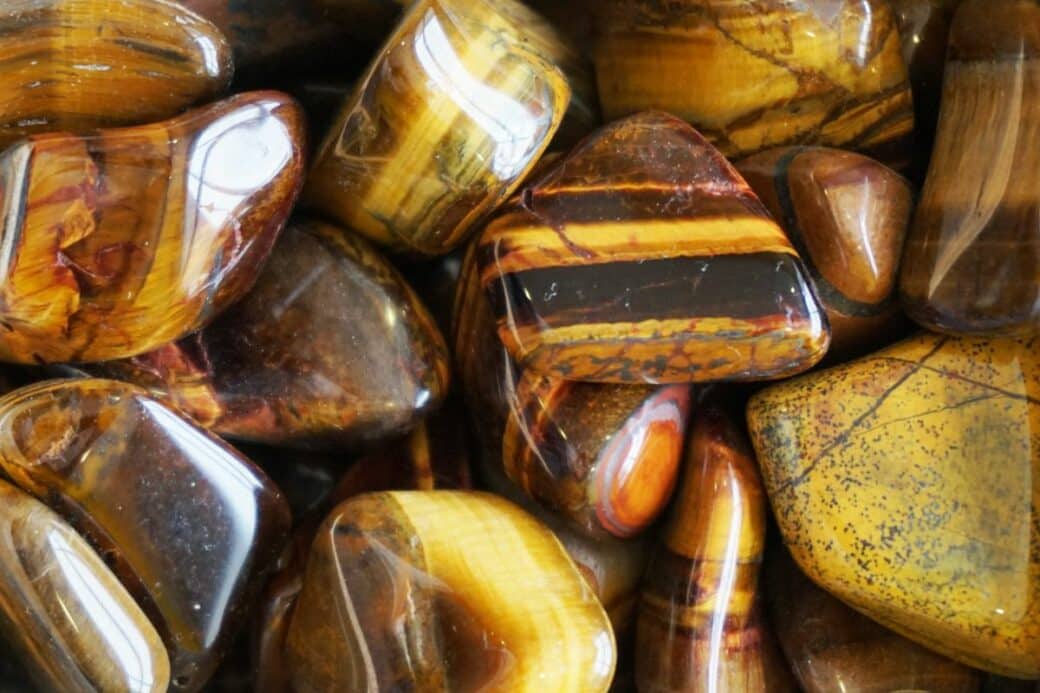Have you ever wondered if you can use your artistic skills to paint on unconventional canvases? Well, here’s your chance to express your creativity in a unique way! In this article, we will explore the fascinating world of painting on singing bowls. Discover how these ancient musical instruments can be transformed into vibrant works of art, and learn about the techniques and materials that can be used to achieve stunning results. So grab your paintbrushes and unleash your imagination as we delve into the enchanting realm of painting on singing bowls!

Can You Paint Singing Bowls: Understanding Singing Bowls
What are singing bowls?
Singing bowls are a type of musical instrument that originated in Asia, particularly in countries like Nepal, Tibet, and Bhutan. These bowls are traditionally made from a combination of metals, such as copper, brass, and bronze. They have a unique shape resembling a rounded bowl or a bell, with a wide rim and a deep, resonating tone.
Types of singing bowls
There are several types of singing bowls available, each with its own distinctive characteristics. Traditional singing bowls are made using a hand-hammering technique, which gives them a unique texture and sound quality. Antique singing bowls, on the other hand, have been passed down through generations and are considered highly prized collector’s items. Additionally, there are also machine-made singing bowls, which are often more affordable and readily available. These bowls are typically made using a casting process and may have a smoother appearance compared to hand-hammered ones.
Traditional and cultural significance of singing bowls
Singing bowls hold great cultural and spiritual significance in the regions where they originated. They are often used in meditation practices, religious ceremonies, and healing rituals. The vibrations produced by the bowls are believed to have a calming effect on the mind and body, promoting relaxation and spiritual well-being. In some Buddhist traditions, singing bowls are used to mark the beginning and end of meditation sessions, as well as to awaken mindfulness.

Materials Used in Singing Bowls
Commonly used materials
Singing bowls are typically made from a combination of metals, namely copper, brass, and bronze. These metals are carefully selected for their resonating properties and durability. Copper is known for its excellent vibration transmission, while brass adds warmth and richness to the sound. Bronze, a combination of copper and tin, provides a balance between tonal qualities and structural integrity. The specific composition of metals used may vary depending on the region and the maker of the bowl.
Importance of material choice in sound quality
The choice of materials plays a crucial role in determining the sound quality of a singing bowl. The different metals used in the construction of the bowl affect its tone, sustain, and harmonic richness. Copper, with its higher density, produces a deep and resonating sound. Brass, on the other hand, adds a brighter and more melodious quality to the tone. The proportions of these metals in the alloy can be adjusted to achieve a desired sound signature.
Impact of different materials on the painting process
When it comes to painting singing bowls, the materials used in their construction can also impact the painting process itself. The smoothness and texture of the surface may vary depending on the metals used. Additionally, certain metals may require special primers or coatings to ensure proper adhesion of the paint. It is important for artists to consider these factors when choosing the painting techniques and materials for their singing bowls.
Preparation for Painting Singing Bowls
Choosing the right singing bowl for painting
Before diving into the painting process, it is important to choose a singing bowl that is suitable for painting. Look for a bowl with a smooth surface, free from any major imperfections or dents. The size and shape of the bowl should also be taken into consideration, as it can impact the overall design and balance of the artwork. Additionally, consider the sound quality of the bowl, as adding paint may alter its resonance to some extent.
Cleaning and initial preparation
To ensure a clean canvas for your artwork, it is essential to clean the singing bowl thoroughly before starting the painting process. Use a mild soap and water solution to gently wash the surface, removing any dirt, dust, or oils. Avoid using harsh chemicals or abrasives that could damage the metal or affect the sound quality. After cleaning, dry the bowl completely before proceeding to the next step.
Deciding on design and color scheme
When it comes to painting singing bowls, the possibilities are endless. It is important to take your time to plan and decide on the design and color scheme that you want to achieve. Consider the overall aesthetic that you are aiming for, whether it be something vibrant and abstract or a more intricate and detailed pattern. Take inspiration from traditional designs or create your own unique motifs. Sketching your ideas on paper can help you visualize the final result before starting to paint.
Choosing the Right Paint
Types of paint to use for singing bowls
There are various types of paints that can be used for painting singing bowls. Acrylic paints are a popular choice due to their vibrant colors, quick drying time, and versatility. They can be easily mixed to create custom shades and can be applied in thin layers for a transparent effect or in thicker layers for a more opaque finish. Oil-based paints can also be used for their rich pigments and longer drying time, allowing for better blending and shading. However, they may require additional drying time and varnishing to protect the artwork.
Considerations for paint choice
When selecting paints for your singing bowl, consider factors such as durability, color fastness, and compatibility with metal surfaces. Look for paints that are specifically formulated for use on metal or other non-porous surfaces. These paints often have better adhesion and resistance to chipping and flaking. It is also advisable to choose paints that are water-resistant and have UV protection, especially if your singing bowl will be displayed in bright sunlight or humid environments.
Problems with using the wrong paint
Using the wrong type of paint can result in several issues. Paints that are not designed for use on metal may not adhere properly, leading to peeling, chipping, or flaking. They may also react with the metal, causing discoloration or tarnishing over time. Additionally, certain paints may contain harmful chemicals or solvents that could affect the sound quality of the bowl or pose health risks. It is important to choose paint that is specifically formulated for use on singing bowls to ensure the longevity and quality of your artwork.
Basic Techniques in Painting Singing Bowls
Painting guidelines for beginners
If you are new to painting singing bowls, it is helpful to start with some basic techniques. Begin by applying a base coat of paint to ensure an even surface and to enhance the vibrancy of the colors. Use thin brushes for fine details and larger brushes for broader strokes. Practice different brush techniques such as stippling, dry brushing, or blending to create texture and depth. Experiment with different color combinations and layering techniques to achieve the desired effect.
Common painting styles
There are several common painting styles that can be applied to singing bowls. Traditional motifs, such as mandalas, lotus flowers, or spiritual symbols, are popular choices for their cultural significance and aesthetic appeal. Abstract designs can also be explored, allowing for more creative freedom and expression. Gradient or ombre effects can be achieved by blending multiple colors together, creating a smooth transition from one shade to another. Other styles may include landscapes, animals, or geometric patterns.
Detailed work on the singing bowls
For those who enjoy more intricate and detailed painting, singing bowls provide a perfect canvas. Fine lines, intricate patterns, and delicate brushwork can be used to create stunning visual effects. Utilize smaller brushes and take your time to draw precise lines and shapes. Dotting tools or stencils can be employed to add intricate details without the need for freehand painting. This level of precision can add a sense of refinement and sophistication to the artwork.
Advanced Techniques in Painting Singing Bowls
Layering and blending techniques
To take your painting skills to the next level, consider experimenting with layering and blending techniques. Layering involves applying multiple thin layers of paint to create depth and dimension. Start with a base layer and gradually build up the colors, allowing each layer to dry before applying the next. Blending, on the other hand, involves smoothly transitioning colors together. This can be achieved by using a wet-on-wet technique or by gradually mixing two or more colors on the surface.
Creating intricate and complex designs
If you are looking to challenge yourself artistically, seek inspiration from traditional patterns, mandalas, or sacred geometry. These intricate and complex designs can be achieved through meticulous planning and attention to detail. Use fine brushes or even specialized tools like micro brushes or pens to create precise lines and intricate patterns. Take your time during the process and don’t be afraid to revise or make adjustments as necessary.
Personalizing your singing bowl
One of the benefits of painting singing bowls is the ability to personalize them to reflect your own style and creativity. Consider incorporating elements that hold personal significance to you, such as symbols, quotes, or images that represent your values or aspirations. This personal touch can make your singing bowl a truly unique and meaningful piece of artwork. It can also serve as a reminder of your own journey and growth as an artist.
Maintaining the Quality of Sound
Understanding how paint can affect sound quality
While painting singing bowls can add visual beauty, it is important to consider its impact on the sound quality of the bowl. The layer of paint can alter the vibrations and resonance of the bowl to some extent. Thicker layers of paint may dampen the sound or alter the tonal qualities of the bowl. Artists should be mindful of this and make adjustments in their painting techniques or material choices to minimize any negative effects on the sound.
Techniques to preserve the sound
To preserve the sound quality of a painted singing bowl, there are a few techniques that can be employed. First, avoid painting the inner surface of the bowl, as this can directly affect the vibrations and resonance. Instead, focus on the outer surface and the rim, where the sound is primarily produced. Secondly, apply thin layers of paint to minimize any dampening effect. Lastly, consider using alternative painting methods such as etching or engraving, which allow for artistic expression while preserving the sound qualities of the bowl.
Choosing designs that enhance the sound
While it is important to preserve the sound quality of the singing bowl, certain design choices can actually enhance the sound. Experiment with painting techniques that create texture or patterns on the outer surface of the bowl. These textures can affect the way the sound reverberates and give the bowl a unique character. Additionally, consider incorporating symbols or imagery that resonate with the intended purpose or symbolism of the bowl, enhancing the overall experience for both visual and auditory senses.
Drying and Finishing Process
Methods for drying singing bowls
Once you have completed the painting process, it is essential to allow the paint to dry thoroughly before handling or displaying the singing bowl. The drying time may vary depending on the type of paint used and the overall thickness of the layers. To ensure proper drying, place the bowl in a well-ventilated area away from excessive heat or humidity. Patience is key during this stage, as rushing the drying process can lead to smudging or damage to the artwork.
Adding a finish or sealant
To protect the painted surface and enhance its longevity, consider adding a finish or sealant to the singing bowl. There are various options available, such as clear varnishes or sealants specifically designed for use on metal surfaces. These coatings provide a protective barrier against moisture, UV rays, and general wear and tear. Prior to applying the finish, ensure that the paint is completely dry. Follow the manufacturer’s instructions for application and allow the finish to cure properly before handling or displaying the bowl.
Ensuring durability of your design
To ensure the durability of your painted design, it is important to handle the singing bowl with care. Avoid placing it in areas where it may come into contact with sharp objects, abrasive surfaces, or extreme temperatures. When moving or storing the bowl, use soft padding or cloth to protect the painted surface. Regularly inspect the bowl for any signs of wear or damage, and address them promptly to maintain the integrity of the artwork.
Care and Maintenance of painted singing bowls
Cleaning and caring for a painted singing bowl
To keep your painted singing bowl looking its best, regular cleaning and maintenance are essential. Use a soft, lint-free cloth or brush to gently remove any dust or debris from the surface. Avoid using harsh chemicals, abrasive materials, or excessive force that could damage the paint. If necessary, lightly dampen the cloth with a mild soap and water solution to remove any stubborn stains. Dry the bowl thoroughly after cleaning to prevent moisture buildup.
Avoiding common issues and damages
While painted singing bowls can be visually stunning, they are still susceptible to certain issues and damages. Avoid exposing the bowl to excessive sunlight or heat, as this can cause the paint to fade or peel. Similarly, avoid placing the bowl in high humidity environments, as this can lead to mold or moisture damage. Take care when handling the bowl to prevent accidental drops or impacts that could chip or scratch the paint. By being mindful of these factors, you can extend the lifespan of your painted singing bowl.
Long-term maintenance tips
To ensure the long-term beauty and preservation of your painted singing bowl, consider implementing the following maintenance tips. Keep the bowl away from direct sunlight or harsh artificial lighting to prevent color fading. If displaying the bowl, use a stand or cushion to prevent direct contact with hard surfaces. Periodically inspect the bowl for any signs of damage or wear and address them promptly. Finally, store the bowl in a cool, dry place when not in use to protect it from dust, humidity, and accidental damage.
Showcasing Your Painted Singing Bowls
Using painted bowls as decorative items
Painted singing bowls can serve as unique and eye-catching decor pieces in your home or workspace. Display them on shelves, mantles, or dedicated stands where they can be admired and appreciated by yourself and others. Consider arranging them in groups or clusters to create a visually striking display. The vibrant colors and intricate designs of the bowls can add a touch of artistic flair to any space, making them perfect conversation starters or focal points.
Playing your painted singing bowls
Despite their visual appeal, painted singing bowls are still functional musical instruments meant to be played. While the layer of paint may slightly alter the sound quality, they can still produce beautiful tones and vibrations. Experiment with different mallets or strikers to explore the range of sounds that your painted bowl can produce. Incorporate the playing of your painted singing bowl into meditation, relaxation, or sound therapy practices, allowing the visual and auditory experiences to intertwine.
Sharing and selling your painted singing bowls
If you have developed a passion for painting singing bowls and have created several pieces, consider sharing or selling your artwork. Display your painted bowls at local art exhibitions, craft fairs, or cultural events to showcase your talent and garner interest. You can also create an online presence by setting up a website or utilizing social media platforms to reach a wider audience. Whether you choose to gift or sell your painted singing bowls, they have the potential to bring joy, beauty, and a sense of cultural appreciation to others.




